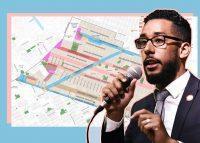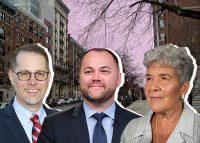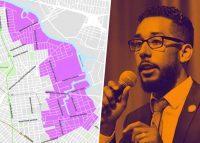A fight over the future of Bushwick could put Mayor Bill de Blasio’s entire housing policy at risk, as opposition to its basic premise — mixed-income housing — seems to be gaining momentum.
The Bushwick drama involves a rezoning of the trendy Brooklyn neighborhood that would allow for more residential construction, triggering the mayor’s mandatory inclusionary housing law, which requires a percentage of every residential project to be affordable.
The idea is for market-rate units to effectively subsidize low-rent ones in new apartment buildings. That is possible in stronger markets such as Bushwick and allows the de Blasio administration to concentrate public subsidies on weaker ones, such as East New York, where market-rate housing is virtually non-existent.
There’s a social policy goal as well: The administration believes poor residents fare better in mixed-income neighborhoods than in areas of concentrated poverty. It has lots of data to back that up.
Moreover, the de Blasio housing policy reflects a belief in the law of supply and demand — that adding units lowers the cost of housing.
Read more



In Bushwick, though, those rationales are being snubbed by the City Council members who will decide the fate of the rezoning: Antonio Reynoso and Rafael Espinal.
Pushed by some of their constituents, they are insisting that the only increase in housing allowed for the neighborhood be “deeply affordable,” meaning so inexpensive that it could not be built without heavy subsidies. The politicians have lined up behind a community zoning proposal that the de Blasio administration rejected last week as “fundamentally a downzoning.”
“It would reduce density significantly in many areas while spurring the creation of few new homes, deeply affordable or otherwise, in others,” wrote Vicki Been, the deputy mayor for housing and economic development, in a letter explaining the decision. “These outcomes run counter to the city’s goals of the rezoning, which would be to encourage new-mixed-income housing to prevent displacement spurred by current market forces while promoting a diverse, healthy and inclusive neighborhood and city.”
The conflict is years in the making. In fact, it emerged soon after de Blasio unveiled his housing plan in 2014, a few months into his first term. Some advocates complained that the housing tiers that the plan deemed “affordable” — including units priced for families earning 130 percent of the area median income — were anything but.
The mayor resisted their complaints as he pushed several neighborhood rezonings through the council, but eventually pledged billions of dollars more in subsidies to deepen affordability. Still, as the Bushwick dispute shows, it has not been enough.
Many residents still believe that upzoning — increasing housing density — will trigger development that attracts additional gentrifiers, raises rents and pushes out longtime residents. They have rejected or simply not heard the mayor’s argument that this has been happening already, and that his rezonings would ameliorate those trends. (Apartment prices in Bushwick jumped 84 percent in a decade, the most of any neighborhood in the city, Trulia found in 2018.)
Despite that sentiment, de Blasio managed to rezone Inwood last year, in part by sweetening the pot for the local City Council member, Ydanis Rodriguez, with $200 million in community benefits. But opponents challenged the rezoning in court and the first judge to hear the case shelved the entire plan, saying the potential effect on gentrification and displacement had not been adequately studied. The city is appealing the ruling.
Similar concerns arose when the administration pushed a rezoning of a swath of northern Staten Island last year, but the plan was approved after changes to reduce rents. The borough president, Republican James Oddo, complained bitterly that units targeted for middle-class families — say, a teacher married to a firefighter — were demonized by local opponents. But they prevailed. (Oddo’s role was limited to making recommendations, as borough presidents’ ceded their land-use power to the City Council in a 1989 City Charter reform.)
The Bushwick rezoning impasse epitomizes the disconnect between the de Blasio administration and the activists who often drive local politics. The Bushwick community proposal, advanced by such groups as Churches United for Fair Housing, sought to preserve more manufacturing space and midblock one- to three-family homes than the city’s plan did. It also snubbed the city’s idea of allowing buildings as high as 14 stories on Broadway, a major corridor of Bushwick. The only exception would be 100 percent affordable buildings on public sites.
By refusing to include an analysis of the community plan in its environmental review of the rezoning, the administration ensures that the locals’ plan cannot be enacted. But it could also make it difficult to reach an agreement with Reynoso and Espinal on a plan. Because the 51-member City Council defers to the local member or members on rezonings, without Reynoso and Espinal’s support a plan would be unlikely to pass.
Of particular concern to the administration, Espinal had shepherded its first neighborhood rezoning, of East New York, through the City Council. His opposition to de Blasio’s Bushwick proposal reflects not only the different dynamic in that gentrifying neighborhood but also a change in the political tides as forces to the left even of the progressive de Blasio gain strength.
“When we began the process of developing a community-based plan for Bushwick, we could have never imagined that Bushwick would receive a level of apathy from our local government reminiscent of the policies that left Bushwick to burn in the 1970s,” Reynoso and Espinal wrote Monday in a letter responding to Been’s. “We remain committed to our community’s vision.”